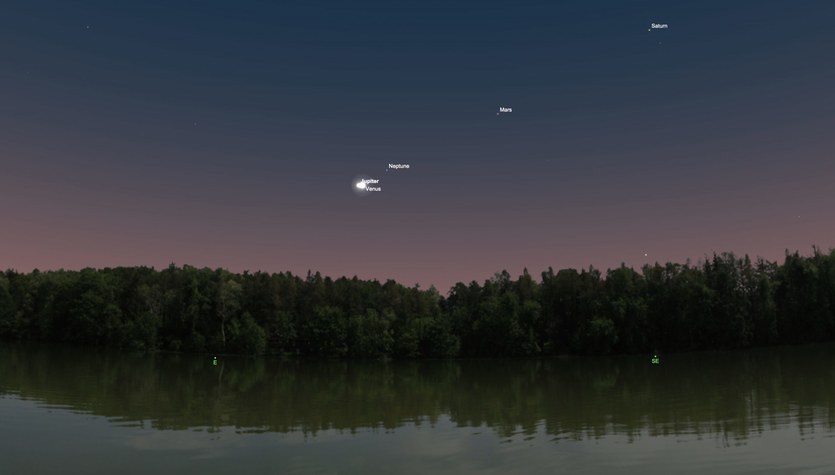Space may look like a doughnut – but it’s “American” (i.e. a donut). In mathematical terms, the universe may have the shape of a torus. You can imagine it as a circle rotated around a straight line at a distance from it. As a result, a surface with two basic properties is created: the inside is tube-like, and the whole is symmetrical about the axis of rotation.
In such a universe, it would be possible to travel through space and return to the starting point, physicists suggest in a research paper published April 26 in “Physical Review Letters”. In the case of simple topology, each closed “path” can be reduced to a certain point. For example, if we wanted to orbit the Earth in an ugly way “horizontally”, by heading to the North Pole, we could dramatically reduce the “path” we would follow – quite a bit, in fact. This certainly wouldn’t work for a toroid that has a non-trivial (or: non-discrete) topology.
It is widely believed that the universe has a trivial topology, although scientists are not sure about this. Dragan Hutterer of the University of Michigan in Ann Arbor believes that the possibility of a universe with a non-trivial topology is so great that it may be impossible to measure its actual size.
A universe with such a structure would be a bit like games in which moving to the edge of the screen causes characters to return from the other side. Scientists are looking for clues to the topology of the universe in the microwave background radiation, which comes from a time when the universe was only 380,000 years old. If space in the universe had a non-trivial topology, it would be possible to observe the same feature in more than one place in the sky. Researchers have been searching for identical or even exact correlations between different points in the background radiation, but so far to no avail.
However, there are scientists who claim that there is a possibility that the universe has a complex topology. Previous research has only looked at a small subset of possible structures, such as a 3D torus, a cube that wraps like a 3D version of the aforementioned “game screen,” in which a character is shown walking to the left edge. On the right side – but in three dimensions. In such a universe, letting go of any side of the cube brings you back to the other side. However, no convincing evidence for this kind of universe topology has been found here either


Therefore, 17 possible non-trivial topologies of the universe were considered. It turns out that most of them have not yet been ruled out. The study evaluated signatures that might appear in the cosmic microwave background for different types of topologies. Future radiation analyzes may reveal clues to complex topologies.
This research will be computationally intensive, so scientists will likely turn to machine learning. There are also plans to analyze data from upcoming surveys of galaxy distribution, including those from the European Space Agency’s Euclid Space Telescope.
What makes it even more interesting is the fact that the “asymmetry” in the universe can be explained using non-trivial topology, which is one of the greatest new mysteries in cosmology. But will we ever be able to come up with satisfactory answers about what it “looks like”? Once upon a time, maybe yes. The only question is when.

Echo Richards embodies a personality that is a delightful contradiction: a humble musicaholic who never brags about her expansive knowledge of both classic and contemporary tunes. Infuriatingly modest, one would never know from a mere conversation how deeply entrenched she is in the world of music. This passion seamlessly translates into her problem-solving skills, with Echo often drawing inspiration from melodies and rhythms. A voracious reader, she dives deep into literature, using stories to influence her own hardcore writing. Her spirited advocacy for alcohol isn’t about mere indulgence, but about celebrating life’s poignant moments.









